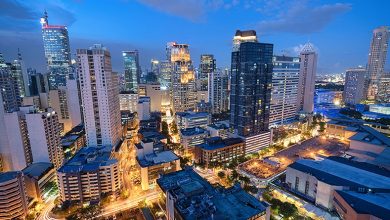Tribal Groups
A government body Panamin, was set up in 1965 to look after the interests of the minority peoples scattered about the north and south of the archipelago. About 60 tribal groups in the Philippines exist and still practice their traditional customs. These non-Muslim minorities amount to some 2 million people. The minority peoples can be classified according to their economic activities. They are located mostly in the areas of Central and Northern Luzon, Mindoro, Palawan, Western Mindanao and Sulu Islands. Some communities live by hunting and food-gathering, others by farming, either of slash-and-burn type or on irrigated terraces.
The Negritos also known as Aetas and Agtas can be described as physically small and usually short in stature, dark-skinned, spiral-haired and broad nosed. They have isolated themselves and driven away successive newcomers to the areas they occupy mostly in the highest and most inaccessible parts of the country, the Sierra Madre, Apayao, Zambales, eastern central Luzon, Surigao, northern Negros, eastern Panay. They number between 20,000 and 30,000, and are still living in the Paleolithic period. Some draw their whole subsistence from the forest, wandering about in the quest for food. Others obtain employment in timber-felling, or go down to work in the plains in exchange for such commodities as tobacco, salt, tools, rice and metal articles; in such cases they tend to speak the language of their neighbours and abandon their own. They live in groups of three or four families under the leadership of the oldest man, marrying either within or outside the group. They frequently adorn themselves with ornamental scars, and file and blacken their teeth. They respect the spirits which control nature and seek to avoid offending them, appeasing good spirits and warding off evil ones by gifts, dances, herbs and talismans.
Tribes like the Sulods, Bukidnons, Subanuns, Manobos, Tirurays, Bilaans, Mandayas, Mangyans, and Tagakaolos, still practise slash-and-burn farming. As a rule the same land is used for only two consecutive years, rice being sown on the first year and vegetables on the second. These communities thus move about from place to place, living in groups of some fifteen families on average. The Apayao, Bontoc, Ifugao, Ibaloy, Kalinga, Kankanai or Tinguian are tribes from the Central Cordillera. These tribes practise irrigated rice-farming and have a more highly stratified society, reflecting the wealth represented by rice.
Much interest was aroused in 1971 by the discovery of a small community of some twenty people in South Cotabato. The Tasadays live in caves and depend on wild tubers and small animals for food. A section of the Philippine Village Museum in Manila gives recognition to this tribe.
More recently (1978) another community of troglodytes was discovered, only slightly larger, the Tau’t Batus living in caves on the extinct volcano of Ransang on the island of Palawan. They are ignorant of agriculture, animal husbandry and the crafts of pottery and weaving, but are able to make fire; their food consists of crabs, frogs, larvae, insects, tubers, wild yams, etc.
The T’boli tribe of South Mindanao is known for their colorful body ornaments consisting of earrings, lush necklaces and handcrafted bracelets. They are one of those tribes that have maintained and evolved artistically rich cultural practices evidently shown in their musical performances.
The Badjaos or sea gypsies are much more difficult to classify. At present they are gradually taking up settled life in southern Sulu and are adopting the Islamic faith, although they are not recognised as Muslims by their neighbours the Samals, still less by the Tausugs.




